ePostcard #54: Elephantastic Pups! (South Georgia)
Imagine for a moment that you have been at sea for several months and that you are returning to South Georgia in late August (early spring) to give birth to a pup you have been nurturing in your womb for 11 months. The beach masters have already arrived at the colony and you can hear their bellicose roars. Using only your small fore flippers you power your way up the sloping beach where you will haul out. You are coming “ home” to your natal (birth) territory and this will be your 4th pup, sired by the previous year’s harem master. You’ll slowly make your way up the beach you know so well, perhaps recognizing other colony members. The enormous bull that appears in the tussocks on the rise above you might well be your next mate, but another equally fit male may draw your attention. You will make that decision in a few days when you have had a chance to rest and observe these dominant bulls in action, deciding which one is the strongest, fittest and has secured the best birthing territory. Your pup, male or female, will be your sole focus for the next 3 to 4 weeks, until it is weaned. During this time, you will fast and spend the entire time on the beach caring for and nursing your pup. The fat and protein-rich milk that you nurse your pup with is derived from your body’s stored fat and nutritional reserves. You will lose about 30% of your body mass (mostly fat) while nursing your pup. Shortly before your pup is weaned, you will become fertile and mate with your chosen harem master—and the cycle will begin anew.
Southern elephant seal pups are born with soft, black fur attached to skin that is extremely loose and wrinkled, and have delicate flippers with long elegant nails. Newborn pups are easily distinguished from older pups, not only by their smaller size, but also, by the fact that they have ‘fetal folds,’ creases along their sides from being curled up in their mother’s womb. Most of the pups in a colony are born during a period of a week or two. Skuas and petrels are opportunists, waiting at the sidelines for the arrival of the newborns and, within seconds of a birth, will fly in to scavenge the afterbirth on the beach. Shortly after giving birth, the mother moves around to face her baby, vocalizing with it (they bond vocally) and defending it from potential predators. Females use a variety of vocalizations to discourage unwanted suitors during this time and to keep other females away from their pups. Each mother and pup have special vocalizations that are instantly recognized by each other. These vocalizations help to keep the female and pup together during the first week of nursing.
A newborn has no blubber, but gains weight very rapidly, nursing on milk that is up to 50 percent fat (a human mother’s milk is 4 percent fat). While suckling her pup, the mother does not eat—mother and pup both live off the energy stored in her blubber. Until the pup has accumulated blubber, its heat-absorbing black fur helps the pup keep warm. The black coat begins to molt within 3 to 4 weeks, and is replaced by silvery-tan hairs, in a process that takes 2 to 3 weeks to complete. Over the course of about a month, the pups rapidly increase their weight while nursing as the mother gets progressively thinner, until she finally is forced to go to sea to feed herself and leaves her pup behind to fend for itself. With the mother’s departure and the cessation of nursing, the “weaners” will undergo a fast for 1-2 months, an advantage that postpones the time they need to search for food until they have learned to swim. At the end of the reproductive season (about two months after it began with the arrival of the males), all of the adults leave and it is only the weaners left on the beach. Once the weaners take to the sea to feed, the colony will be empty until the elephant seals return the next summer to molt.
To help build global awareness, we would appreciate it if you would share this post with your friends and colleagues. Please choose one of the options below which includes email and print! Thank you.

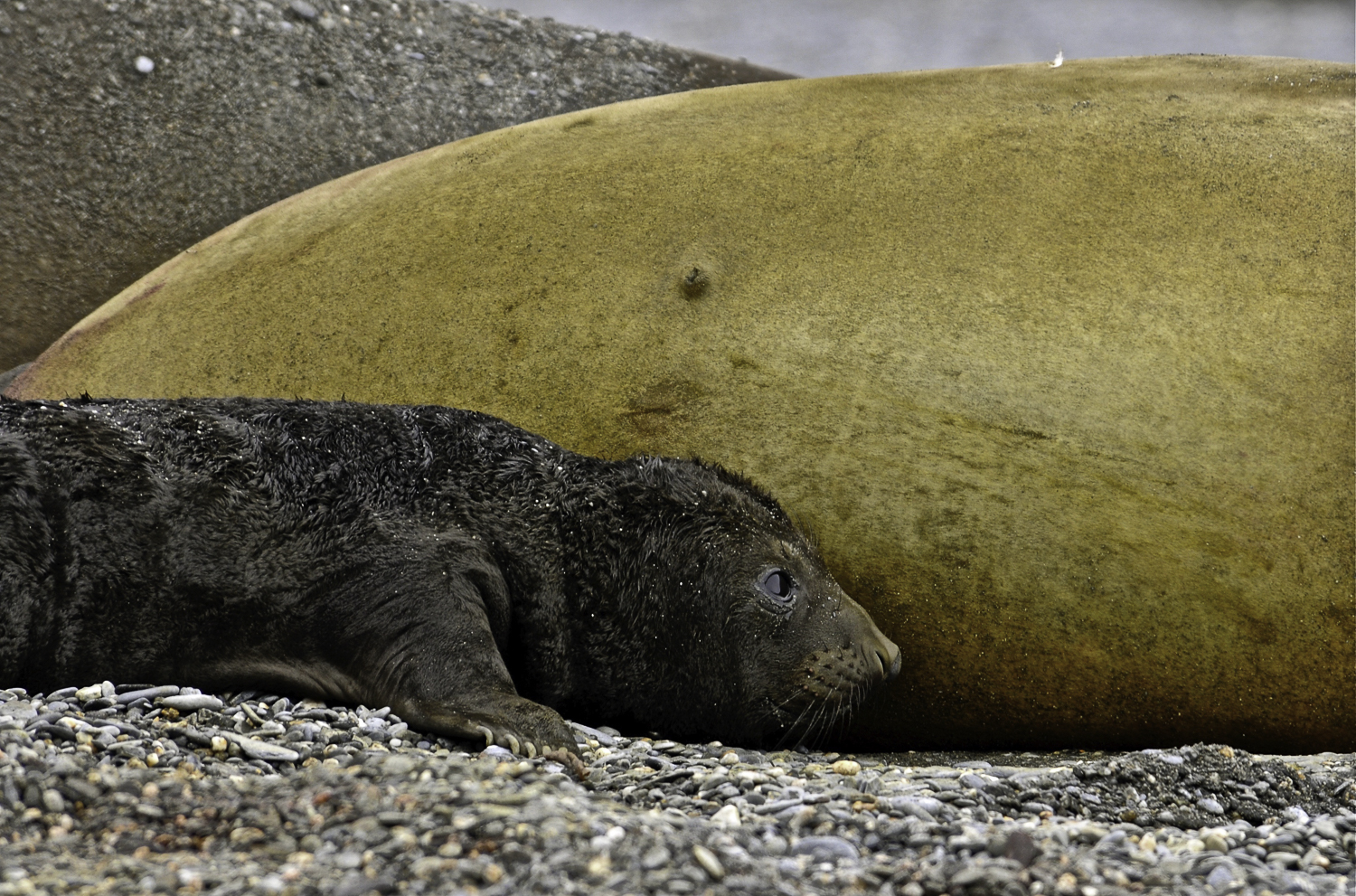
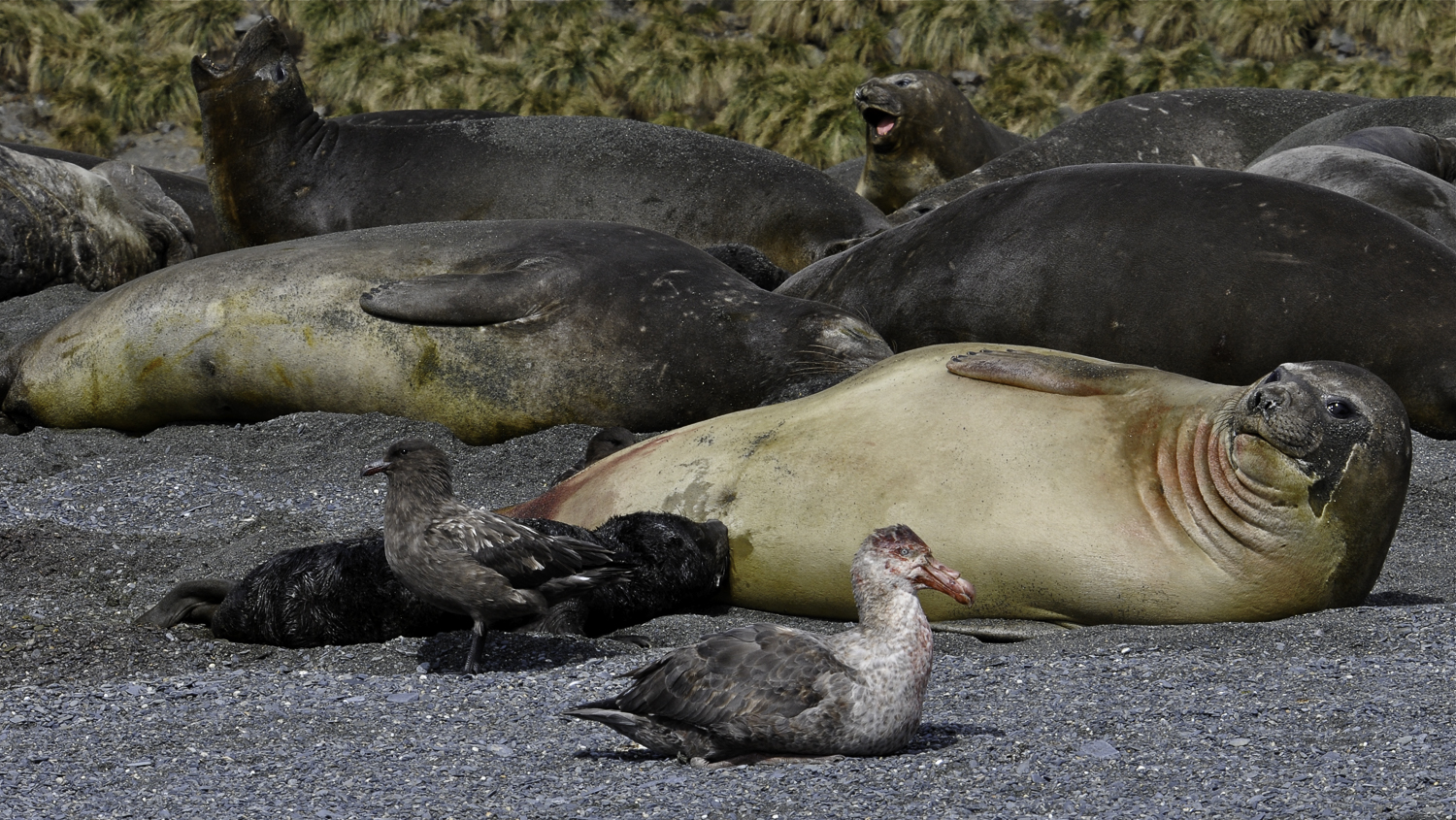
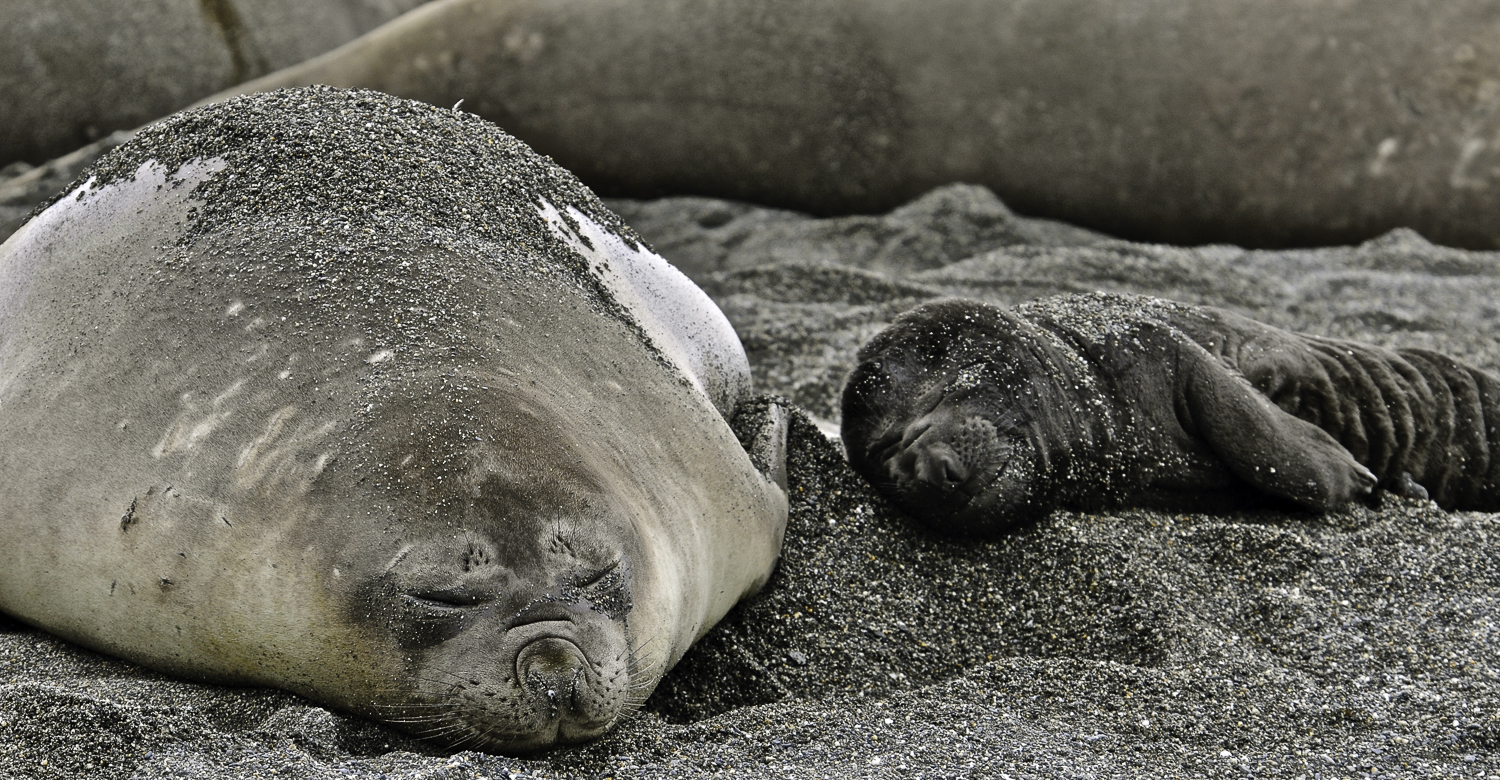


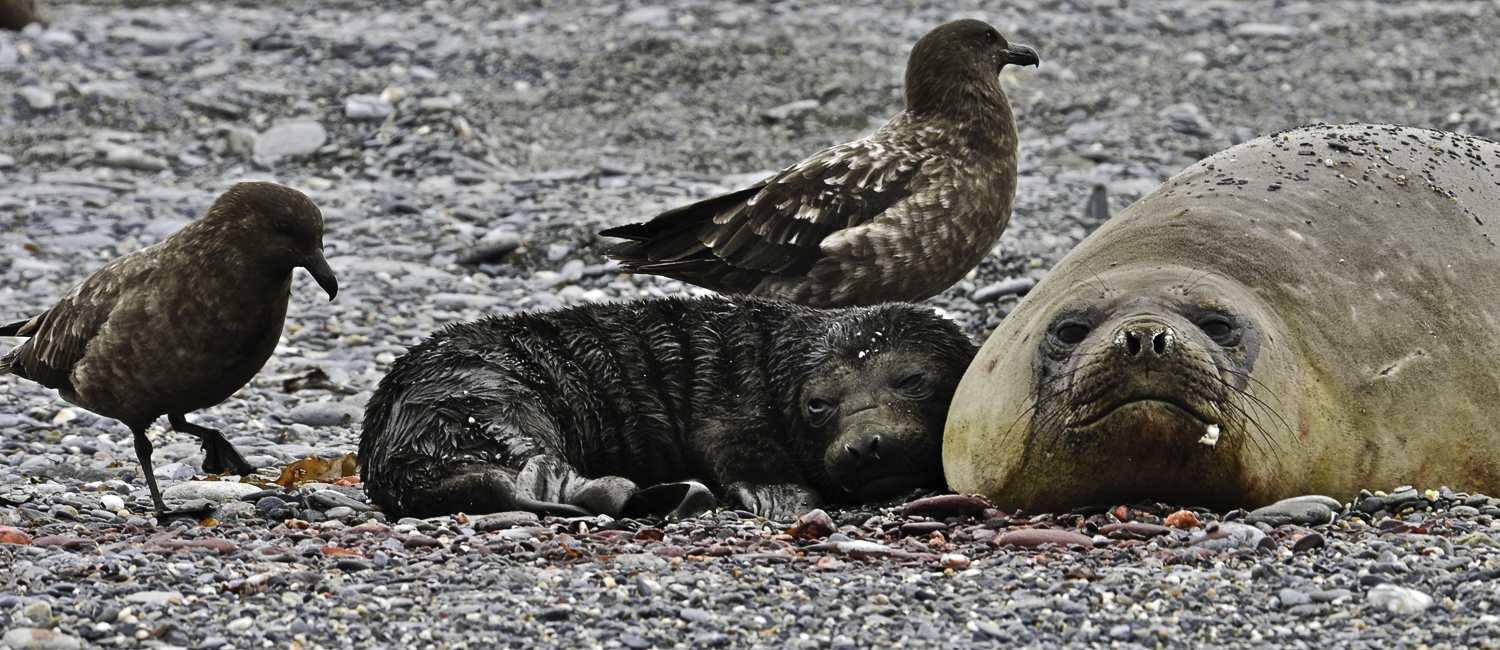
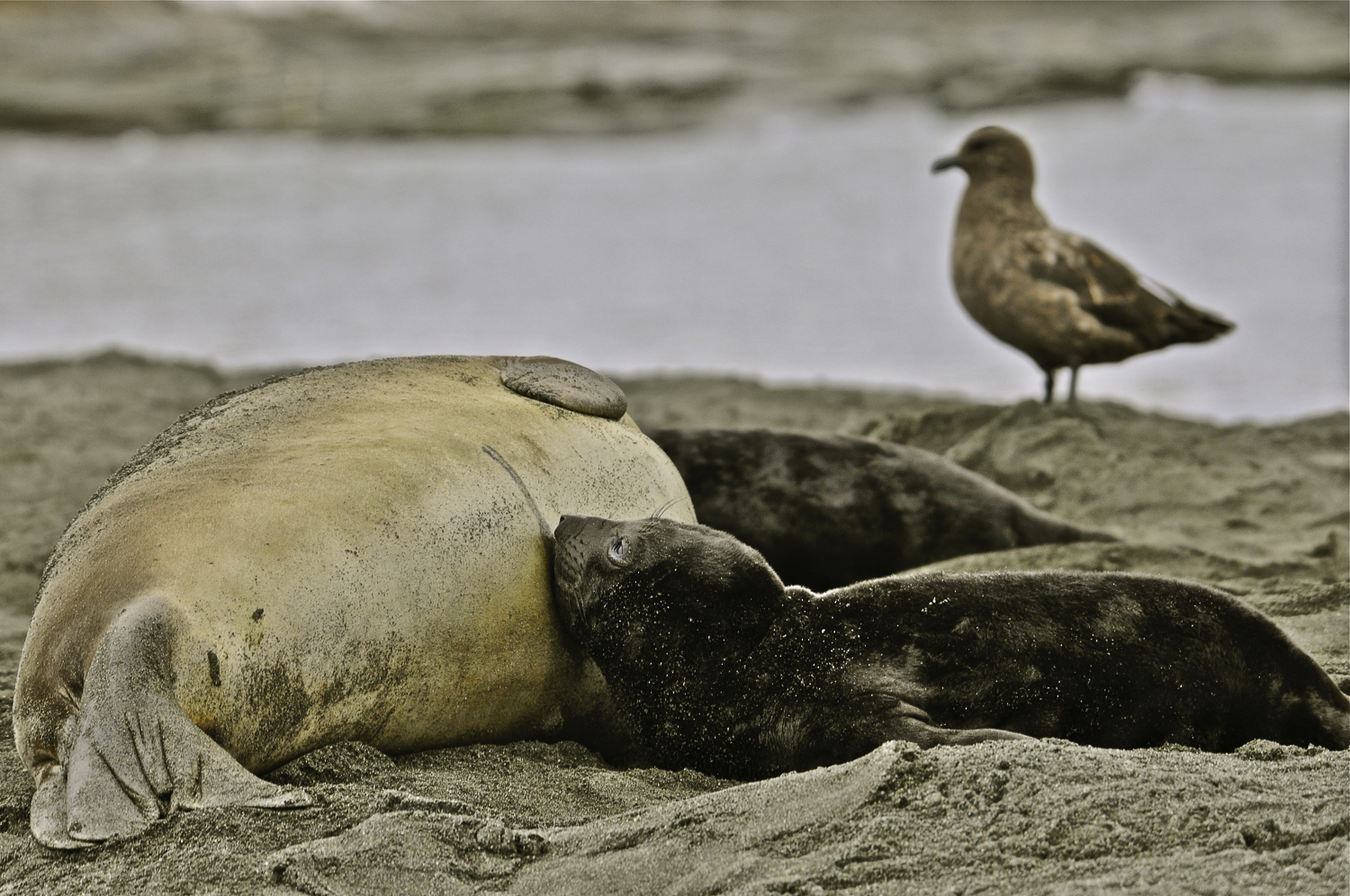
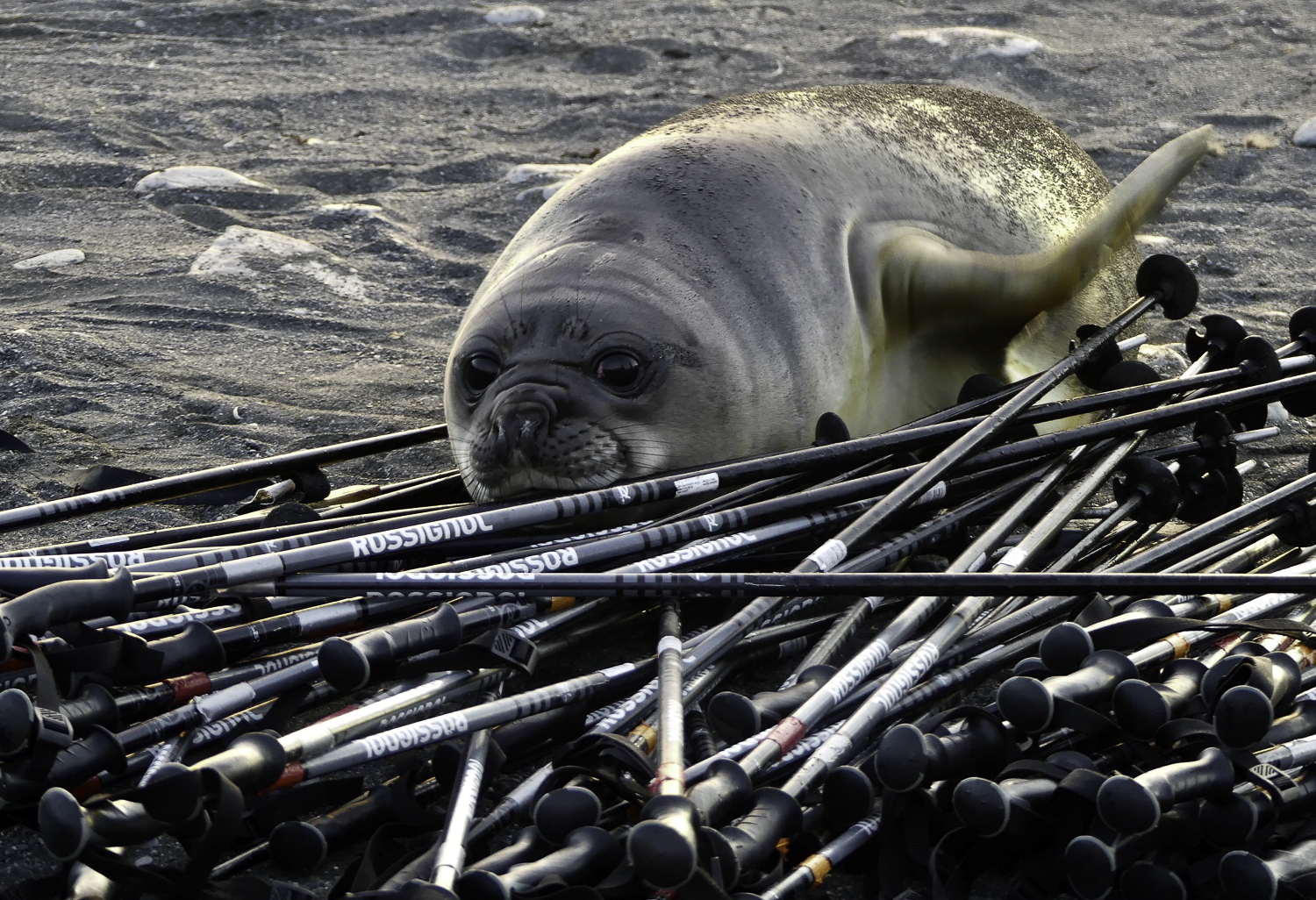
Audrey, I am blown away by these images. Your knowelege of the natural world and your skill in photography is topped by your artistic creativity in such amazing use. Thank you
This series on the elephant seals has been simply amazing – as always both your in depth knowledge and photography is astounding! But I must ask about the ski poles…a Rossignol shipment lost in stormy seas? But they are all lined up as if placed on the beach. Hmm, perhaps the ski poles are used for hiking? If so, it looks like this curious weaner has laid claim to the whole lot of them!
Tara, whenever you go ashore on South Georgia beaches with big colonies of elephant seals or fur seals–OR BOTH–you are issued a trekking pole that is to be used to “warn” off (or defend yourself from) an advancing seal (males most likely) that might simply be curious but may also be pushing a more aggressive agenda. Southern elephant seal bulls have attacked and seriously injured people who were situationally unaware or who pushed their luck to get closer to photograph. We had stacked the poles on the beach before going off to see some gentoo penguins and came back to discover this elephant weaner snoozing on the poles. It did not want to get off them so that we could pack them up in the sack to put in the Zodiac.
Wow! I can’t imagine a trekking pole would really intimidate those harem masters! I’m glad you were wise, situationally aware, and never had to test a pole’s effectiveness!